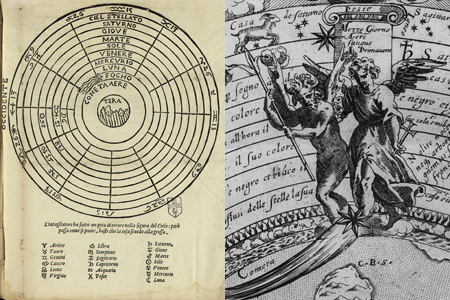
The seminar, which will be held entirely in English, will be taught by Dario Tessicini, senior lecturer in Italian (Durham University)
The López Piñero Institute for the History of Medicine and Science (joint centre of the University of Valencia and the CSIC), with headquarters in the Palau de Cerveró, presents the seminar entitled The comet and the plague: medical and astrological debates in early modern Venice, that will take place 20 May at 17:00, in the Institute’s conference room.
The lecture will focus in the study of scientific knowledge dissemination through leaflets and similar publications. The specific cases to be dealt with come from medical and astrological writings that invaded the Venetian libraries after 1576’s plague and next year’s comet. Those texts are full of short discourses and satirical dialogues, in poetic style in Latin, plus one-sheet posters. Through the analysis of the content, function, genre and ways of circulation of these publications, the seminar sets out the aim of contributing some thoughts on the interrelation between astrology, meteorology and medicine in early modern Venice.
Dario Tessicini is senior lecturer in Italian at Durham University. He accomplished his doctoral studies in History of Science and has worked in research projects on the History of Philosophy, Astronomy/Astrology, and Medicine in sixteenth century Italy. He has also published a book on Giordano Bruno, I dintorni dell’Infinito, Giordano Bruno e l’astronomia alla fine del Cinquecento (2007), as well as articles on Copernicus and Fracastoro (with M. A. Granada), Cornelius Gemma, Ptolemeo’s Geography and on the history of astronomy in Italy. The present work which deals, with literature on meteorology and medicine after 1575-1576’s plague, is at the same time part of a wider project on the history of science in Italy during the decades previous to the telescopic observations of Galileo Galilei.
















